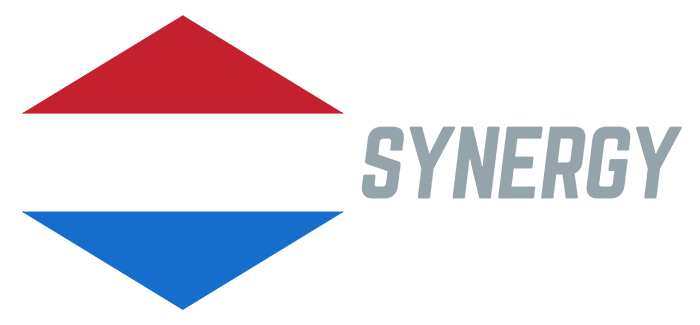
by Josh Seaman | Mar 24, 2025 | Uncategorized
In today’s fast-paced hiring landscape, a disturbing trend is quietly undermining businesses everywhere: AI-generated resumes.
✨ Polished.
✨ Keyword-optimized.
✨ Emotionally intelligent.
But often, completely disconnected from who the candidate actually is.
At Gateway Synergy Recruitment, we’re seeing it more and more: Candidates who look flawless on paper—yet fall apart in the real world.
This isn’t just a minor hiring hiccup. It’s a serious business risk. And without the right tools, it’s becoming harder to detect.
The Rise of AI Resumes: A New Hiring Threat
AI resume generators are exploding in popularity. In under five minutes, candidates can create resumes that:
✔️ Beat ATS filters
✔️ Tailor themselves perfectly to your job ad
✔️ Align with leadership language, industry lingo, and culture cues
✔️ Present soft skills and strengths that sound ideal
But here’s the problem:
What looks like a perfect match on paper is often just strategic fiction.
- The “strategic thinker” may crumble under pressure.
- The “team player” might clash with your culture.
- The “high performer” may lack the aptitude to do the actual job.
And once they’re in? It’s too late.
The Real Cost of Hiring Based on Resumes Alone
Hiring without deeper insights isn’t just a mistake—it’s negligence.
Every misaligned hire costs your business more than just money:
⚠️ Decreased team morale
⚠️ Damaged culture
⚠️ Lost productivity
⚠️ Management burnout
⚠️ A revolving door of rehires and retraining
Worse? The impact compounds over time.
- One poor hire turns into two.
- High performers start to disengage.
- Your culture erodes from within.
And all because the resume looked “too good not to hire.”
The Solution: Behavioural & Cognitive Clarity
So how do you cut through the noise and get to the truth?
With two proven assessments:
✅ DISC (Behavioural Profiling)
DISC reveals how a person behaves in real-world situations—under stress, in teams, with clients, and in leadership roles.
You’ll uncover:
✔️ Their communication style
✔️ How they handle feedback, pressure, and conflict
✔️ Whether they’re naturally collaborative or competitive
✔️ How they really show up at work
✅ Aptitude Testing
This assesses the candidate’s raw problem-solving ability—their capacity to learn, adapt, and succeed in dynamic roles.
It’s the difference between a CV that says “detail-oriented” … and a brain that actually is.
Together, these tools remove the guesswork and help you hire based on truth, not polish.
DISC & Aptitude vs. AI Resumes: A Side-by-Side Look
| Feature |
AI Resume |
DISC & Aptitude |
|
| Surface-level polish |
✅ |
N/A |
|
| Predicts behaviour |
❌ |
✅ |
|
| Measures actual ability |
❌ |
✅ |
|
| Cultural alignment |
❌ |
✅ |
|
| Authenticity |
❌ (potentially misleading) |
✅ (data-backed insights) |
|
The verdict?
AI can fake the CV.
But it can’t fake behavioural patterns or cognitive ability—and that’s where the real hire lives.
What’s at Stake If You Skip These Assessments
Hiring without DISC and aptitude testing today is like driving without headlights at night—and AI-generated resumes are only making the road more dangerous.
Here’s what’s really on the line:
❌ Thousands lost in salary, training, and onboarding
❌ Culture rot that repels your best people
❌ Declining performance metrics and KPIs
❌ Leadership distraction and burnout
❌ A loss of trust in your hiring judgment
This isn’t exaggeration. It’s what we hear every week from companies who’ve learned the hard way.
What Smart Companies Do Instead
They don’t guess. They assess.
Top-performing businesses use DISC and aptitude testing as non-negotiables in their recruitment process. Why?
✔️ They hire people who actually fit their culture
✔️ They promote leaders who know how to lead
✔️ They avoid high-risk hires hidden behind AI polish
✔️ They build stronger, more cohesive, and higher-performing teams
What If You Could See the Red Flags Before You Hire?
At Gateway Synergy Recruitment, we offer every client the option to integrate DISC and aptitude assessments into their hiring process—easily, affordably, and with expert guidance.
✔️ We’ve saved businesses from six-figure mistakes.
✔️ We’ve helped teams rebuild after culture damage.
✔️ We’ve transformed how hiring managers evaluate candidates—with confidence and clarity.
And we can do the same for you.
The Time to Act is Now
The rise of AI resumes isn’t slowing down.
Candidate misalignment is becoming harder to spot.
And every day you hire without DISC and aptitude, you’re taking a risk you don’t need to take.
So ask yourself:
❓ Can you afford the next wrong hire?
❓ Can your team survive another culture mismatch?
❓ Do you want to lead with confidence—or keep hiring on hope?
Ready to Protect Your Next Hire?
✅ Click here to access our DISC & Aptitude Testing and get the tools you need to hire with certainty—not just hope.
Because in today’s market, guesswork is a liability.
And your business deserves better.
Gateway Synergy Recruitment
Smart hiring. Built on insight.

by Tony Gavin | Mar 20, 2025 | Uncategorized
In today’s competitive job market, technical skills and qualifications are no longer the sole determinants of career success. While expertise in a specific field is undoubtedly important, soft skills have become equally, if not more, essential in achieving long-term career advancement. Soft skills are interpersonal attributes that enable individuals to interact effectively with others, manage emotions, and navigate the complexities of the workplace. These skills are often undervalued in technical fields but are crucial for building relationships, gaining leadership roles, and excelling in professional environments.
What Are Soft Skills?
Soft skills encompass a wide range of abilities, including communication, teamwork, adaptability, problem-solving, emotional intelligence, time management, and leadership. Unlike hard skills, which are technical and job-specific (such as proficiency in a programming language or accounting software), soft skills are transferable across industries and roles. They enable individuals to effectively collaborate with colleagues, resolve conflicts, motivate teams, and demonstrate leadership potential.
The importance of soft skills in the workplace is reflected in the fact that many employers cite these attributes as a key consideration when hiring or promoting employees. Research shows that 75% of long-term job success is based on soft skills, while only 25% is based on technical knowledge. This statistic highlights the significant role soft skills play in career progression.
Building Strong Communication Skills
One of the most important soft skills for career advancement is communication. Whether it’s verbal or written, effective communication is essential in every aspect of the workplace. From sharing ideas and giving presentations to writing reports or participating in meetings, communication enables professionals to articulate their thoughts clearly and engage with colleagues, clients, and superiors.
Strong communicators are often perceived as more competent and capable leaders. They can articulate complex ideas in an understandable manner, foster collaboration within teams, and resolve conflicts with tact. In fact, individuals who can communicate effectively are more likely to be considered for leadership positions or advancement opportunities.
Teamwork and Collaboration
In today’s interconnected work environment, teamwork is vital. Employers seek individuals who can work well with others, contribute to group projects, and share ideas. Soft skills related to teamwork, such as listening, empathy, and conflict resolution, are key to fostering positive relationships with colleagues and contributing to a cooperative work environment.
Employees who can collaborate across departments, offer assistance to colleagues, and integrate diverse perspectives into their work are viewed as valuable team players. This not only improves organizational efficiency but also enhances the chances of career advancement, as collaborative individuals are often trusted with larger projects and leadership responsibilities.
Emotional Intelligence and Self-Regulation
Emotional intelligence (EQ) refers to the ability to recognize and manage one’s own emotions, as well as understand and influence the emotions of others. In a workplace setting, EQ is crucial for managing stress, responding to challenges, and building strong professional relationships.
Individuals with high emotional intelligence are often better at resolving conflicts, maintaining a positive work environment, and leading others effectively. They can handle criticism constructively, adapt to changing circumstances, and exhibit resilience in the face of setbacks. These attributes make emotionally intelligent individuals more likely to excel in leadership roles and advance in their careers.
Time Management and Adaptability
Time management is another essential soft skill for career growth. Professionals who can prioritize tasks, meet deadlines, and work efficiently are more likely to succeed in fast-paced environments. Effective time management ensures that employees can juggle multiple responsibilities without compromising the quality of their work.
Adaptability is equally important, especially in industries that are constantly evolving. The ability to adjust to new technologies, processes, and work environments is a key driver of career advancement. Employees who embrace change, stay open to learning new skills, and remain flexible in the face of challenges are more likely to thrive in their careers.
Leadership and Mentorship
For those aiming to climb the corporate ladder, leadership skills are indispensable. Soft skills like the ability to motivate others, inspire trust, and delegate tasks effectively are central to successful leadership. Leaders with strong interpersonal skills can foster a supportive work environment, encourage innovation, and drive teams to achieve organizational goals.
Mentorship is another avenue through which soft skills contribute to career development. Being a mentor or seeking out mentorship opportunities helps individuals expand their network, gain valuable insights, and develop the leadership capabilities necessary for advancement.
Conclusion
While technical expertise is essential, soft skills are often the differentiating factor between those who stagnate in their careers and those who climb the ladder to success. Professionals who excel in communication, teamwork, emotional intelligence, time management, and leadership are not only more effective in their current roles but also more likely to secure promotions and greater responsibilities. As industries become more interconnected and dynamic, the ability to navigate interpersonal relationships and adapt to change is increasingly important. Therefore, developing and honing soft skills is crucial for anyone seeking to advance in their career.

by Tony Gavin | Mar 17, 2025 | Uncategorized
In an era where the internet and technology shape the way we communicate, shop, and consume information, digital marketing skills are no longer just a plus—they are a necessity. As businesses shift from traditional marketing methods to digital platforms, the demand for professionals with expertise in digital marketing continues to rise. Understanding the significance of these skills can help job seekers navigate the competitive job market and secure desirable positions.
The Digital Shift
The rapid transformation of consumer behavior towards digital platforms is at the heart of the necessity for digital marketing skills. According to recent studies, a significant percentage of consumers research products and services online before making a purchase. Given this reality, businesses must adapt their marketing strategies to meet consumers where they are—notably on social media, search engines, and websites. As a result, companies are increasingly prioritizing candidates who possess digital marketing skills, recognizing that they are integral to driving online engagement and sales.
Essential Digital Marketing Skills
To succeed in today’s job market, aspiring marketers need to master a range of skills. These include:
- Search Engine Optimization (SEO): Understanding how to optimize website content for search engines is crucial. SEO helps businesses increase their visibility and rank higher in search results, driving organic traffic to their sites.
- Content Marketing: The ability to create and promote valuable content is vital for engaging audiences. Content marketing involves storytelling and providing useful information, which can enhance brand loyalty and customer engagement.
- Social Media Marketing: Platforms like Facebook, Instagram, and LinkedIn are powerful tools for reaching potential customers. Marketers must know how to create effective social media campaigns, engage with users, and measure the impact of their efforts.
- Email Marketing: Building a mailing list and crafting compelling email campaigns is essential for nurturing leads and converting them into customers. Digital marketers should be familiar with best practices for segmentation, personalization, and analytics.
- Data Analysis: With the plethora of data available from digital marketing efforts, being able to analyze metrics and derive actionable insights is crucial. Knowledge of tools like Google Analytics can help marketers track performance and optimize future campaigns.
Career Opportunities
The demand for digital marketing skills opens up numerous career opportunities across industries. Roles such as digital marketing manager, SEO specialist, content strategist, social media manager, and data analyst are in high demand. Companies ranging from start-ups to established corporations need skilled professionals to develop and execute effective digital marketing strategies.
Moreover, as businesses increasingly prioritize a strong online presence, professionals with digital marketing experience can command higher salaries and advancement opportunities. This trend highlights the value of continuous learning in the field, as new tools and techniques emerge regularly.
The Competitive Edge
In today’s job market, digital marketing skills can provide a distinct competitive advantage. Employers are looking for candidates who can contribute to their online strategies, making those with digital marketing expertise more attractive. Learning these skills through online courses, certifications, or practical experiences like internships can enhance a candidate’s resume and set them apart from peers.
Conclusion
Digital marketing skills are crucial in today’s job market, influencing how businesses engage with consumers and generate sales. As the digital landscape continues to evolve, professionals equipped with these skills are positioned for success. For job seekers, focusing on developing a strong foundation in digital marketing can open doors to diverse career opportunities and enhance their employability. As businesses prioritize digital strategies, the importance of these skills will only continue to grow, making them a vital aspect of modern career development.

by Tony Gavin | Mar 12, 2025 | Uncategorized
In today’s competitive job market, employer branding has become a key factor in attracting and retaining top talent. Companies no longer just focus on traditional recruitment methods to fill open positions; they must also emphasize the importance of their brand identity to stand out from the competition. Employer branding refers to the way an organization is perceived by potential employees, and it plays a critical role in shaping recruitment strategies. A strong employer brand can help businesses create a positive reputation, build trust with candidates, and ultimately attract the best-fit talent to drive their success.
What is Employer Branding?
Employer branding is the image and reputation of a company as an employer, as opposed to its reputation as a product or service provider. It encompasses the company’s culture, values, work environment, employee benefits, career development opportunities, and overall mission. Essentially, it’s the way in which a company markets itself to prospective employees. Employer branding is not just about what a company offers but also how it communicates its unique value proposition and the experience it provides to employees.
Attracting Top Talent
The primary advantage of a strong employer brand is its ability to attract top talent. In a market where job seekers are more discerning about where they work, prospective employees often research a company’s reputation before applying for a job. Companies with a positive employer brand are more likely to stand out in job searches and attract highly qualified candidates who align with the organization’s values and culture. Candidates today want to work for companies that not only offer good compensation but also a supportive work environment, career growth opportunities, and a clear sense of purpose.
Furthermore, employer branding can help businesses target specific groups of talent, such as individuals with specialized skills or experience in a particular field. A clear, well-articulated employer brand communicates to candidates that the company is an attractive, reputable, and stable workplace, making them more likely to want to join.
Building Trust and Loyalty
A strong employer brand not only attracts candidates but also fosters trust and loyalty among employees. When the company’s values align with those of the employees, it creates a sense of shared purpose and strengthens the employee experience. A consistent and authentic employer brand communicates transparency and integrity, building trust within the workforce. Employees who feel valued and engaged in the company’s mission are more likely to stay long term, reducing turnover rates and increasing retention.
Moreover, candidates who have positive perceptions of an employer brand are more likely to be engaged and motivated from the outset. This engagement boosts the likelihood of a successful onboarding process, greater job satisfaction, and a deeper commitment to the company’s goals.
Improving Recruitment Efficiency
A well-established employer brand can significantly improve recruitment efficiency. Companies with strong employer brands can reduce the time and cost associated with hiring by attracting a larger pool of qualified candidates. This reduces the need for extensive recruitment efforts, as top talent is already aware of the company and its offerings. Furthermore, a positive employer brand often leads to better quality applications, meaning recruiters can focus their efforts on candidates who are a good fit for the company’s culture and job requirements.
Social media and online platforms play an essential role in employer branding today. Job seekers increasingly use platforms like LinkedIn, Glassdoor, and Indeed to research potential employers, making it crucial for companies to manage their online presence and communicate their employer brand clearly. Companies with a strong employer brand often have positive reviews and testimonials from current or former employees, which help to attract the attention of candidates who are actively seeking a workplace that aligns with their values.
Employer Branding and Employee Advocacy
Employees can serve as powerful brand ambassadors, promoting the company’s culture and values both online and offline. Companies that prioritize employee satisfaction and create an environment that fosters pride and loyalty are likely to see their employees share their positive experiences on social media, review sites, and networking events. Employee advocacy is a powerful tool in recruitment because candidates are more likely to trust the experiences and recommendations of current employees than corporate messaging alone.
Conclusion
In conclusion, employer branding plays a critical role in modern recruitment strategies. A well-crafted employer brand attracts top talent, builds trust with employees, improves recruitment efficiency, and boosts employee advocacy. In an age where employees are seeking more than just a paycheck, employer branding helps companies communicate their values, work culture, and career growth opportunities to the right candidates. By investing in employer branding, companies not only enhance their recruitment efforts but also create an environment where employees can thrive, leading to long-term success and growth.

by Tony Gavin | Mar 7, 2025 | Uncategorized
The construction industry has historically been slow to adopt new technologies compared to other sectors. However, recent years have seen a rapid transformation driven by innovative technologies that enhance productivity, safety, and sustainability. As we explore the latest innovations in construction, it is crucial to understand the implications for industry stakeholders, from engineers to project managers, and how these advancements reshape traditional practices.
Building Information Modeling (BIM)
One of the most significant advances in construction technology is Building Information Modeling, or BIM. This three-dimensional modeling system allows construction professionals to create and manage digital representations of physical and functional characteristics of a building. BIM streamlines project management by enabling collaboration among architects, engineers, and contractors. It improves planning and reduces errors and rework by providing a comprehensive view of a project, allowing for better decision-making and resource allocation.
Drones in Construction
Drones are revolutionizing the way construction sites are monitored and managed. Equipped with high-resolution cameras and sensors, drones provide real-time aerial footage, facilitating site inspections and surveys. They enable project managers to gather data quickly and accurately, leading to optimized project timelines and reduced costs. Additionally, drones enhance safety by monitoring hard-to-reach areas, reducing the need for workers to expose themselves to hazardous situations.
3D Printing
3D printing technology is making its mark in the construction sector by enabling the rapid fabrication of building components. This innovation allows for the creation of complex structures that would be time-consuming and expensive to produce through traditional methods. By using sustainable materials and reducing waste, 3D printing contributes to environmentally friendly construction practices. Companies are exploring methods to 3D print entire buildings, which could drastically change the speed and cost of construction projects.
Prefabrication and Modular Construction
Prefabrication and modular construction techniques have gained popularity as they allow for components of structures to be manufactured off-site and assembled on-site. This approach reduces construction time and minimizes disruption to the surrounding environment. Moreover, modular construction enhances quality control, as components are fabricated in a controlled environment. The flexibility of modular designs enables faster responses to market demands and often results in lower overall project costs.
Artificial Intelligence and Machine Learning
Artificial Intelligence (AI) and Machine Learning (ML) are emerging as powerful tools for optimizing various aspects of construction. From predicting project risks to improving design efficiency, AI technologies analyze vast amounts of data to provide actionable insights. These insights can lead to better project management, resource allocation, and overall decision-making. AI-driven predictive analytics can also enhance safety measures by identifying potential hazards before they occur.
Sustainable Building Technologies
With a growing emphasis on sustainability, innovative building technologies that minimize environmental impact are gaining traction. Green building practices, such as the use of energy-efficient materials and renewable energy sources, are becoming standard in new construction projects. Technologies like smart sensors help monitor energy consumption, enabling building owners to optimize resource use and reduce operating costs. As governments and organizations prioritize sustainability, the adoption of these technologies will only continue to increase.
Conclusion
The construction industry is witnessing an unprecedented technological transformation that is set to redefine processes, enhance efficiency, and improve safety. From BIM and drones to 3D printing and AI, these innovations are not just altering the way buildings are constructed; they are creating a more sustainable future for the industry. Stakeholders must embrace these changes to remain competitive and meet the evolving demands of a rapidly changing world. As technology continues to advance, the potential for further innovations in construction is limitless, paving the way for smarter, safer, and more efficient building practices.

by Tony Gavin | Mar 4, 2025 | Uncategorized
Introduction
The rise of remote hiring has transformed the recruitment landscape, driven by advancements in technology and changing work preferences. Companies are now tapping into global talent pools, leveraging remote hiring to access diverse skills and expertise. However, this shift comes with unique challenges and considerations. This article explores what companies need to know about remote hiring, from its benefits to best practices for success.
The Benefits of Remote Hiring
- Access to a Global Talent Pool Remote hiring eliminates geographical limitations, allowing companies to recruit talent from anywhere in the world. This access to a broader talent pool increases the chances of finding the best fit for the role.
- Cost Savings Hiring remotely can significantly reduce costs associated with office space, utilities, and other overheads. Additionally, companies can often find skilled workers in regions with lower living costs, resulting in savings on salaries without compromising quality.
- Increased Diversity and Inclusion Remote hiring promotes diversity by enabling companies to recruit from varied cultural and socio-economic backgrounds. This diversity fosters creativity, innovation, and a more inclusive work environment.
- Enhanced Flexibility Remote work arrangements offer greater flexibility, which can lead to increased employee satisfaction and productivity. Employees who can work from their preferred locations often experience better work-life balance.
Challenges of Remote Hiring
- Onboarding and Integration One of the key challenges in remote hiring is effectively onboarding new employees. Without in-person interaction, integrating new hires into the company culture can be difficult.
- Communication Barriers Remote teams rely heavily on digital communication tools, which can sometimes lead to misunderstandings or a lack of engagement. Companies must ensure clear and consistent communication channels.
- Security and Compliance Remote hiring involves handling sensitive information across different locations and networks. Companies need robust cybersecurity measures and compliance with local employment laws and regulations.
- Performance Management Monitoring and managing the performance of remote employees can be challenging. Companies must adopt new tools and metrics to evaluate productivity and ensure accountability.
Best Practices for Remote Hiring Success
- Use Technology to Streamline the Process Leverage advanced recruitment technologies like AI-powered applicant tracking systems (ATS) and video interviewing platforms. These tools help streamline the hiring process, from sourcing candidates to conducting interviews.
- Implement a Strong Onboarding Program Create a comprehensive remote onboarding program that includes virtual training sessions, regular check-ins, and a clear introduction to company culture. Assign mentors or buddies to help new hires settle in.
- Foster Effective Communication Establish clear communication protocols and use collaboration tools like Slack, Zoom, or Microsoft Teams. Regular virtual meetings and updates help maintain transparency and team cohesion.
- Prioritize Cybersecurity Ensure that remote employees have secure access to company systems. Use VPNs, encrypted communication tools, and two-factor authentication to protect sensitive data.
- Focus on Employee Engagement Remote workers can feel isolated, so it’s essential to foster a sense of community. Organize virtual team-building activities, encourage social interaction, and provide regular feedback and recognition.
Conclusion
The rise of remote hiring offers companies numerous advantages, from accessing a global talent pool to cost savings and increased flexibility. However, it also presents unique challenges that require thoughtful strategies to overcome. By leveraging technology, fostering effective communication, ensuring robust security, and focusing on employee engagement, companies can successfully navigate the complexities of remote hiring. Embracing this shift will position organizations for long-term success in the evolving world of work.







Recent Comments